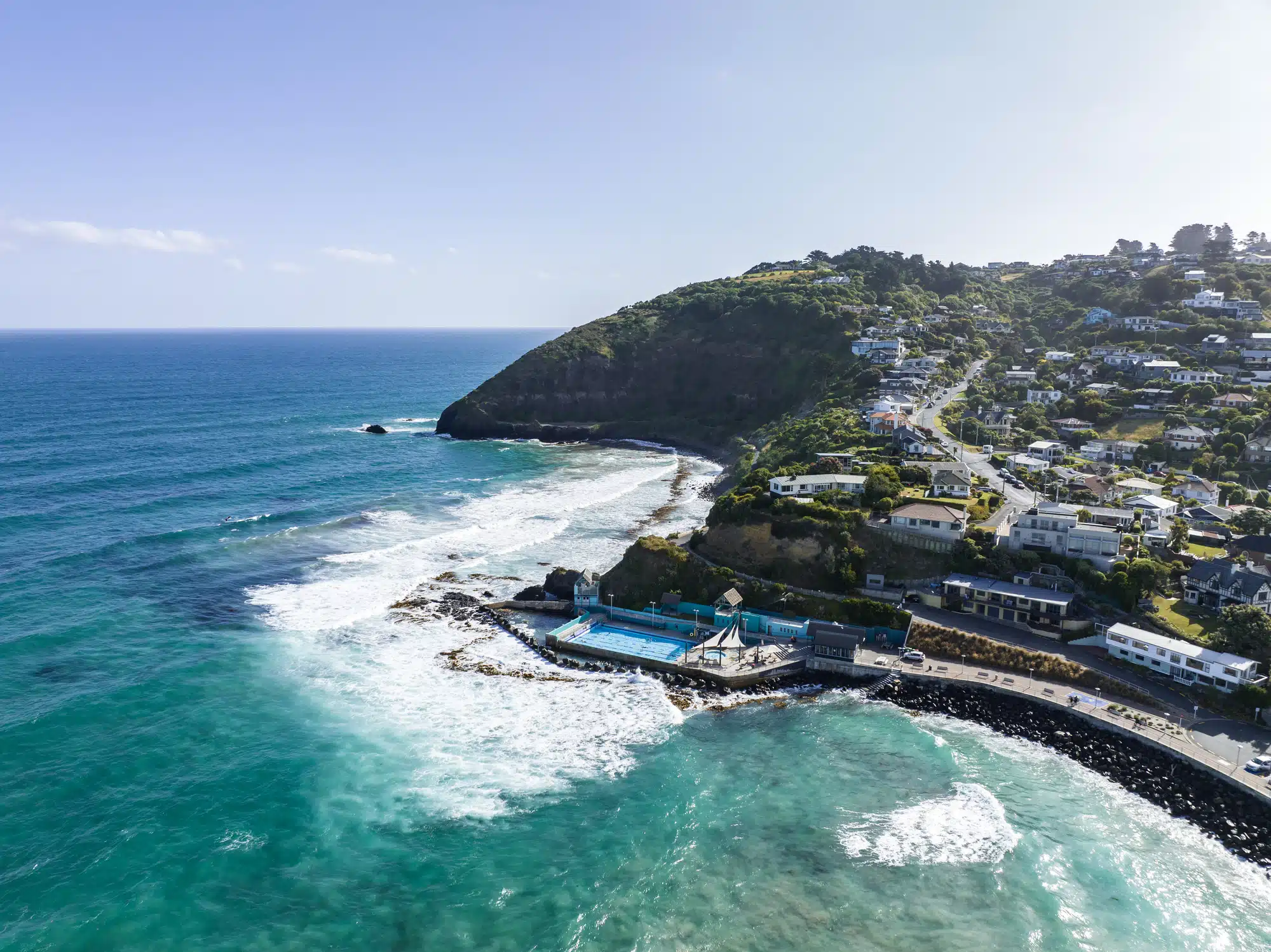Partnership with ATAINZ
March 29, 2021 — TMNZ today announces a partnership with The Accountants and Tax Agents Institute of New Zealand (ATAINZ). The partnership will advance TMNZ's ambition to accelerate the adoption of tax pooling solutions amongst taxpayers who would benefit from genuine provisional tax flexibility. In addition, TMNZ is announcing plans to commence offers and opportunities via the ATAINZ membership.
ATAINZ members will be able to look forward to the collaboration between TMNZ and ATAINZ. Starting from Q2 2021, ATAINZ members will have available tax pooling training, collateral options, and an ATAINZ point of contact at TMNZ.
Richard Abel, Chairperson of ATAINZ said: “Having been a user and supporter of tax pooling through TMNZ for a number of years, we’re excited to formalise an agreement with TMNZ for all our members. Signing the partnership with TMNZ affirms our commitment to being recognised as the voice of small-medium businesses (SME) in New Zealand. Tax pooling presents a cashflow solution that more should be aware of.”
Neil Bhattacharya, Head of Client Services at TMNZ said: “ATAINZ is a progressive organisation that is growing quickly and TMNZ is looking forward to partnering with them for the next 3 years and beyond. We feel strongly that tax pooling is a key cashflow tool for SMEs and a perfect match for ATAINZ clients looking for cashflow options.”
About ATAINZ
The Accountants and Tax Agents Institute of New Zealand (ATAINZ) exists to promote the welfare and professional development of its members and to represent members' interests in New Zealand. It is unique in the New Zealand tax and accounting market because of its grassroots contact with members.
Terminal tax isn’t due until 7 April – so why's IR already charging interest?
Just because a terminal tax amount for the 2019-20 income year is not due and payable until 7 April does not mean Inland Revenue (IR) is not already charging interest.
Why is this happening, you may be asking?
There could be several reasons. The method used to calculate your provisional tax payments, your income tax liability for the year, or whether you underpaid or failed to pay an instalment on time and in full can all be factors.
However, to understand why that might be happening, one needs to understand the different interest rules that apply for provisional taxpayers.
Below we explain how they work for those who used the standard uplift or estimation methods to calculate their payments during the 2019-20 income year.
We also cover the somewhat unfair rules that apply for new provisional taxpayers in their first year of trading because these often catch people out.
Standard uplift method
Please refer to the table below.
| If your income tax liability for the year is… | And you paid… | Then… |
| Less than $60,000 | All uplift instalments on time and in full or had no obligation to pay provisional tax for the year. | IR interest should only apply from your terminal tax date if you fail to pay by then the final balance required to satisfy your liability for the 2019-20 income year. |
| $60,000 or more | The uplift instalments on time and in full at all instalment dates prior to the last one.
Any final balance remaining to settle what is owed for the year at the date of the final instalment. |
IR interest should only apply from the date of your final instalment if you fail to pay by then the remaining balance to satisfy your liability for the 2019-20 income year. |
But what happens if you did not pay an uplift instalment on time or in full?
In this situation, the following rules will apply.
When provisional tax is underpaid or paid late at an instalment date prior to the final one for the 2019-20 income year, IR will charge interest on the lesser of:
- The uplift payment due, minus any amount paid in relation to that instalment; or
- The actual income tax liability for the year divided by the number of instalment dates for the year, minus any amount paid in relation to that instalment.
At the date of the final instalment, IR will also charge interest on the remaining balance owing to settle your liability for the year.
Estimation method
For those who used or switched to the estimation method at any time during their 2019-20 income year, IR may be charging interest as far back as the date of the first provisional tax instalment if you did not pay enough tax to satisfy your actual liability.
Interest will be charged based on the following: The income tax liability for the year divided by the number of instalments payable for the year, minus any amount paid in relation to that instalment.
New provisional taxpayers
A different set of rules apply to those in their first year of trading whose income tax liability is $60,000 or more.
That’s because they will be deemed to be a new provisional taxpayer.
A taxpayer must meet certain criteria to be considered a new provisional taxpayer. This criteria differs for individuals and companies/trusts.
For the 2019-20 income year, an individual is a new provisional taxpayer if they satisfy ALL of the below:
- Their income tax liability for the year is $60,000 or more.
- Their income tax liability in each of the four previous tax years was $2500* or less; and
- They stopped receiving income from employment and started to receive income from a taxable activity during that tax year.
A Company/trust is a new provisional taxpayer in the 2019-20 income year if they satisfy ALL of the below:
- Their income tax liability for that tax year is $60,000 or more; and
- They did not receive taxable income from a taxable activity in any of the four previous years.
How many interest instalments
IR will charge interest based on the number of instalments you could have paid if you are a new provisional taxpayer.
The number of instalments you could have paid is based on the date you started your taxable activity.
For those with a 31 March balance, please refer to the table below.
| If your first year of trading starts… | Then the number of provisional tax instalments payable is… |
| Before 29 July | Three (28 August, 15 January and 7 May) |
| On/after 29 July but before 16 December | Two (15 January and 7 May) |
| On 16 December or any time after that | One (7 May) |
These dates will differ if your balance date is not 31 March or you file GST returns on a six-monthly basis.
Interest will be charged based on the following: The income tax liability for the year divided by the number of instalments payable for the year, minus any amount paid in relation to that instalment.
*For the 2020-21 income year onward, the threshold was increased to $5000.
How TMNZ can help
If there is IR interest showing on your account, there's a way to reduce this cost significantly.
As an IR-approved tax pooling provider, TMNZ can apply tax paid to IR on the original due date against your liability if you have missed or underpaid your provisional tax for the 2019-20 income year.
This wipes any IR interest and late payment penalties showing on your account.
How it works
You pay the core tax plus TMNZ’s interest to us rather than paying IR directly.
Once we receive your payment, we transfer the date-stamped tax amount you require from our account at IR to your IR account.
As the tax carries a date stamp, IR treats it as if you have paid on time once it processes this tax pooling transaction. This eliminates any late payment penalties incurred.
TMNZ’s interest cost can be significantly cheaper than the interest IR charges if you underpay your tax. As of 8 May 2020, IR debit interest is currently seven percent.
You have up to 75 days past your terminal tax date for that tax year to pay the additional provisional or terminal tax you owe via TMNZ.
That means if you have a 7 April 2021 terminal tax date, you have until mid-June to settle your income tax for the 2019-20 income year.
Please contact us if you have any questions about tax pooling.
IR payment allocation rules explained
Provisional tax payments made on or before the date of the final instalment for the year are applied to the oldest overdue tax amount first while payments made after the date of the final instalment are applied to the interest owing on any overdue tax first, then the overdue tax amount.
The Inland Revenue (IR) payment allocation rules – which are found in s120F and s120L Tax Administration Act 1994 – also apply to payments made via a tax pooling provider such as TMNZ.
It’s important to understand how they work and differ from one another.
Detailed explanation
Section 120L covers provisional tax payments made on or before the date of the final instalment for the year.
It requires IR to apply a payment to unpaid tax in order from oldest to newest. Please note the unpaid tax amount(s) include late payment penalties.
Section 120F deals with payments that are made after the date of the final provisional tax instalment for the year.
It requires IR to apply payments, in the following order, towards:
- The interest accrued on the oldest unpaid tax amount until that interest is paid.
- The oldest unpaid tax amount until that tax is paid.
- The interest accrued on the next oldest unpaid tax amount until that interest is paid.
- The next oldest unpaid tax amount until that tax is paid.
- To each subsequent arising interest and unpaid tax amount using the pattern above, in time order that relevant unpaid tax arises, until they are paid.
Again, the unpaid tax amount in s120F includes late payment penalties.
The ramifications
These allocation rules mean a taxpayer may well find a tax payment they intended to be destined for a particular instalment date is allocated by IR’s system to earlier unpaid amounts first.
For example, let's say they may make a $10,000 payment on time and in full on 15 January 2021. However, if they failed to pay their 28 August 2020 (P1) provisional tax, then their $10,000 payment will be applied as per s120L to the overdue tax amount (including late payment penalties) at P1 first.
As such, this leaves them exposed to additional (and unexpected) late payment penalties and interest.
It does not matter if the $10,000 payment they made on 15 January 2021 is a date-stamped transfer from the account of a tax pooling provider. Please see sRP19 (1B) Income Tax Act 2007.
In other words, you need to clear the tax liability at all earlier instalment dates first.
How TMNZ can assist with missed provisional tax payments
It's best to purchase from TMNZ the backdated tax to cover the shortfall at the earlier instalment date.
This achieves two things.
Firstly, it eliminates late payment penalties and significantly reduces the interest cost on the underpaid tax.
That’s because the tax you are purchasing from TMNZ was paid to IR on the date it was originally due. IR will treat it as if you have paid on time once it processes your transaction with TMNZ.
Secondly, it ensures that any other payment that was otherwise made on time and in full will be allocated to the particular provisional tax date for which it was intended.
A taxpayer has up to 75 days past their terminal tax date for that tax year to purchase the tax they require.
For example, if you have a terminal tax date of 7 February 2021, you will have until mid-April to settle your 2020 income tax with TMNZ. Those with a 7 April 2021 terminal tax date have until mid-June.
Please contact us if you have any questions. We're happy to help.
Payment options for 15 January provisional tax
One of the challenges of paying provisional tax in times of economic uncertainty is making a payment that is both appropriate and does not negatively impact your cashflow.
Tax is one of the largest expenditure lines for a business, so you want to get it right.
You don’t want to overpay, because that’s money sitting at Inland Revenue (IR) that you could be utilising in your business. Conversely, you don’t want to underpay because you run the risk of facing IR interest and late payment penalties from the date of your underpayment.
Tax pooling offers a safety net if you cannot make your 15 January payment on time or accurately forecast your payment.
It's a service that offers benefits not available to those who pay IR directly, at no downside.
Pay provisional tax when it suits you
The Christmas-early New Year period is often a challenging time. After all, it is a four-week break from business as usual as things slow down.
For someone looking to manage cashflow, tax pooling lets you pay your 15 January provisional tax when it suits you.
Acceptance is guaranteed, and no security is required.
As an IR-approved tax pooling provider, TMNZ can be used to pay your tax on the actual date it is due (e.g. 15 January 2021).
You then pay TMNZ as soon as cash is available and IR recognises it as if the money was paid on time by you.
There are a couple of ways to pay.
You can finance your provisional tax payment. This sees you pay a fixed interest cost upfront and then the core tax amount at an agreed date in the future.
Alternatively, you can enter an instalment arrangement. Under this payment plan, interest is recalculated on the core tax amount owing at the end of each month.
The instalment arrangement offers flexibility in the sense you can pay as and when it suits your cashflow.
All tax pooling arrangements eliminate late payment penalties. The interest payable is significantly cheaper than what IR charges if you fail to pay on time.
Pay what you think, top up later
Most taxpayers tend to base their provisional tax on a 105 percent uplift of the previous year’s liability.
However, the current economic climate may have forced some in highly impacted sectors to revise expectations around profitability for the 2020-21 income year to the point where making payments based on the calculation above is no longer appropriate.
Others simply may be facing difficulty forecasting their liability. As such, they may want to keep cash close at hand in case things change suddenly.
Now there is some good news.
You do not need to pay provisional tax on 15 January based on uplift, nor do you have to file an estimate to pay less than uplift.
Instead you can pay provisional tax based on your forecast expectations of profitability for the year at the time.
Don't worry if, once you determine the liability for the 2020-21 income year, it transpires that you have underpaid. You can purchase any additional tax you owe on 15 January 2021 from TMNZ.
This can be done at a cost that is less than IR’s debit interest rate. It also eliminates any late payment penalties incurred.
That's because the tax you are purchasing from TMNZ was paid to IR on the date it was originally due.
You pay the core tax plus TMNZ's interest cost when you make your payment to TMNZ. TMNZ then applies the date-stamped tax sitting in its IR account against your liability.
IR will treat it as if you paid on 15 January 2021 once it processes this transaction. The remits any late payment penalties showing on your account.
Please contact us if you have any questions about tax pooling.
TMNZ is Now a Partner of Live Ocean

On Thursday, 15 October 2020 TMNZ announced a new partnership with Live Ocean. The announcement at Akarana Yacht Club, where TMNZ used to have their HQ and Live Ocean founders Blair Tuke and Peter Burling first sailed a 49er, aims to turn around some pretty worrying stats about the state of our ocean by accelerating positive ocean action in New Zealand. 94% of New Zealand’s area is ocean, and like business, ocean health is a cause that deserves and demands our leadership.
The story of giving for TMNZ and its founder isn’t new. After pitching the idea of tax pooling to various governments for almost 20 years, Ian and Wendy decided to ‘take the helm’ and mortgage their home to get the industry and TMNZ started in 2003. Since then they have continued to support people and causes that make a difference to the lives of others in NZ. Partnering with Live Ocean is one entry amongst a growing list where all profits are committed to charity each year.
Ian has always had an interest in sailing and saw first-hand the positive impact that Team New Zealand had in Valencia, San Francisco and Bermuda. He was impressed by Peter and Blair, who at the top of their sport, want to find time to make the world a better place. Partnering with them seemed almost fated.
When asked what the support of TMNZ means for Live Ocean, Peter said “So little of our Ocean is protected, 90% of our seabirds are at risk. This helps us fund projects that reverse these trends”.
As a foundation partner of Live Ocean, we see the potential to unlock capability and funding for ocean conservation in New Zealand. When our people are at work, they know they’re helping build a better New Zealand.
To learn more about Live Ocean and the work they are doing visit liveocean.com
Anti-money laundering requirements and tax pooling
Tax Management NZ (TMNZ) must now conduct a limited form of customer due diligence on all clients as part of recent changes to anti-money laundering (AML) requirements.
As such, we will be collecting information about the taxpayers using our service and asking anyone acting on their behalf to supply some basic personal details.
We also need to see evidence that a taxpayer has an actual or expected liability at Inland Revenue (IR) before we transfer tax from our tax pool.
Transactions cannot be completed until we receive this information from you.
Information we require from a taxpayer
For a company, limited AML requires us to collect and hold information about them that is publicly available. We will obtain this information ourselves from the New Zealand Companies Office. You don’t have to do this.
For an individual or a trust, we only need information from a person acting on their behalf (see below).
What person acting on behalf means
As part of the limited AML requirement, TMNZ must collect the identity information from at least one individual who has the authority to act on behalf of a taxpayer using our service.
For tax agents, this can be either of the following:
- A partner, director or owner of your firm; or
- An agent at your firm who is linked to the taxpayer (e.g. the taxpayer’s accountant). It can also include the person who entered the transaction for the taxpayer or the person who receives email correspondence regarding the taxpayer’s transaction if this person is different from the accountant.
For a taxpayer, this can be ANY of the following:
- The taxpayer themselves, if they are an individual.
- An employee who has authority to act on behalf of the taxpayer (if they are a company).
- A trustee of the taxpayer (if they are a trust). We require a copy of the trust deed to ensure this person has authority to act.
The person above requires a TMNZ dashboard login and must either have visibility to view all taxpayers registered with your accounting firm or be linked to the specific taxpayer or transaction. This is not applicable if the taxpayer is an individual or the person acting on behalf is a trustee.
You have the option of supplying the tax agent or taxpayer identity information as part of limited AML.
Identity information we require from a person acting on behalf
TMNZ must collect the following identity information as part of the limited AML requirement if you are a person acting on behalf of the taxpayer:
- Your full legal name.
- Date of birth.
The above is required under section 15 Anti-Money Laundering and Countering Financing of Terrorism Act 2009.
Any personal information TMNZ holds about you or your clients is stored on a secure system that has been penetration tested to ensure this data will not be compromised.
Confirmation of tax liability
The limited AML requirement means TMNZ must also ascertain that a taxpayer using our service has a liability or expects to have a liability with IR before we can complete their transaction.
Proof of this can be in the form of:
- Written confirmation from a tax agent that the taxpayer is expecting to have a liability at IR. (This can be an approximation if the exact figure is not known at the time.)
- A copy of the taxpayer’s myIR transaction detail report for the relevant tax year.
- Standard uplift amounts determined from prior year RIT information. Prior year RIT information must be determined from copies of IR correspondence or written confirmation from a tax agent.
- A copy of any provisional tax estimate submitted to IR by the taxpayer.
- Any correspondence from IR showing a liability to pay in respect to the relevant tax year.
We only require confirmation of a taxpayer’s liability when we transfer funds from the tax pool to their IR account.
Does the information provided need to be verified?
A partial exemption granted to the tax pooling industry means there is no need for TMNZ to carry out the verification requirements that apply under full AML.
In other words, we do not need you to provide copies of documents to substantiate the information you provide.
Full AML, including verification, is still required for refunds or sales that meet our policy thresholds.
AML has been around for a long time – why are you asking for this information now?
Previously, TMNZ only carried out AML if a taxpayer was requesting a refund or sale over a certain amount from the tax pool.
However, our AML regulator – the Department of Internal Affairs (DIA) – is making tax pooling providers hold more information about every taxpayer using our service and anyone with authority to act on their behalf.
This limited AML requirement from DIA is in response to the accounting profession being brought into the AML regime. It has been in effect since 1 July 2020.
As a reporting entity captured under the Act, TMNZ must comply with the AML regulations set out in the legislation and any other requirements issued by DIA.
Please feel free to contact us if you have any questions. We’re happy to help.
Updated 12 October 2020
Disclaimer: This article is correct as at 12 October 2020. It is subject to change.
How filing late and losing EOT impacts provisional tax payments
Losing extension of time (EOT) due to filing income tax returns late means someone can only use 105 percent of the previous year's residual income tax (RIT) when calculating their provisional tax payments.
That's because if a taxpayer fails to provide their returns(s) on time, Inland Revenue's (IR) system defaults to using the date by which they were legally due to file the return for that year – not the date on which they furnished the return.
Only if someone files their return(s) within the required timeframe will the actual date of filing be used.
This is important to remember, particularly when using TMNZ’s Tax Calculator.
An overview of IR's system and TMNZ's Tax Calculator
When a taxpayer files their return for the most recently completed year, IR’s system uses the lesser of standard uplift or a third of their RIT to determine the provisional tax instalment amounts due and payable for that year.
As per s120KBB (3B) Tax Administration Act 1994, the standard uplift instalment can either be the lesser of the 105 percent or 110 percent calculation. You can read more about that here.
TMNZ’s calculator follows the same logic as IR's system.
To determine the instalment amounts due and payable, it requires a taxpayer's RIT and filing date information for the past three years:
- The current tax year or most recently completed tax year (e.g. 2020).
- The tax year prior to that (e.g. 2019).
- The tax year two years prior to that (e.g. 2018).
Whereas IR has access to this information, we unfortunately don't. That's why we ask users to enter these details themselves.
If someone was late in providing a return and lost their EOT in any of the years before the current or recently completed tax year, then it’s crucial they know the correct filing date to use, otherwise the calculator will spit out incorrect instalment amounts.
After all, garbage in, garbage out.
Example
A taxpayer with a 31 March balance date decided to use TMNZ’s Tax Calculator to work out the provisional tax payable for the 2019 tax year. They did not pay any income tax for that year and wanted to purchase it from TMNZ to reduce their interest cost and eliminate late payment penalties.
RIT and filing date information for the past three years
| Tax Year | RIT | EOT | Legal date by which they must file their return | Date they file their return | Return status |
| 2017 | $6000 | Yes | 31 March 2018 | 1 May 2018 | Late |
| 2018 | $10,000 | No | 7 July 2018 | 16 January 2019 | Late |
| 2019 | $25,000 | No | 7 July 2019 | 30 June 2019 | On time |
As you can see, the taxpayer has lost their EOT for the 2018 tax year due to filing their 2017 return late. Their 2018 return was also late, so they don’t have EOT for their 2019 tax year either. However, the taxpayer did file the latter year’s return on time.
This means when using TMNZ’s Tax Calculator they must enter into the ‘date of filing’ field the respective legal dates by which they were required to furnish the returns for the 2017 and 2018 tax years.
For the 2017 tax year, this will be 31 March 2018 as their EOT was still applicable. For the 2018 tax year, this will be the non-EOT deadline of 7 July 2018.
Legislation states anyone who has an early balance date (i.e., the period between 1 October and 31 March) must file their return by 7 July if they do not have EOT. Those without EOT who have a late balance date (i.e., the period between 1 April and 30 September) must file their return on the seventh day of the fourth month after their year-end.
As the 2019 tax return was provided within the mandatory timeframe, the taxpayer can use the actual date on which they submitted that year’s return to IR.
Recap: How things should look in TMNZ’s Tax Calculator
| Tax year | RIT | Date of filing |
| 2017 | $6000 | 31 March 2018 |
| 2018 | $10,000 | 7 July 2018 |
| 2019 | $25,000 | 30 June 2019 |
How this impacts provisional tax instalments
In this situation, the 2019 provisional tax instalments will be based on the standard uplift amount as this is lower than a third of the RIT for that year.
However, ALL uplift payments will be based on 105 percent of the 2018 RIT.
That’s because the taxpayer lost EOT for the 2018 tax year and, therefore, was supposed to have filed their return for that year on 7 July 2018 – before the date of their first provisional tax instalment for the 2019 tax year (this being 28 August 2018).
As such, they cannot base any payments off 110 percent of their 2017 RIT.
Therefore, the 2019 instalment amounts due and payable as per IR's system – and what TMNZ's Tax Calculator will tell them to purchase – at each date are as follows:
- 28 August 2018: $3500
- 15 January 2019: $3500
- 7 May 2019: $3500
TMNZ's calculator will also show the taxpayer needs to purchase at their terminal tax date the final balance of $14,500 to settle the 2019 RIT, as their RIT is less than $60,000.
Please note the terminal tax date will have been 7 February 2020 due to them losing their EOT. They would have had 75 days from this date to purchase from TMNZ the 2019 income tax they require.
Don't forget the flow-on effect
It is also important to remember that because there was a requirement to file the 2019 return by 7 July 2019, the taxpayer can only use the 105 percent uplift calculation for their 2020 provisional tax payments.
Again, this is due to the filing date for the 2019 return being before the first instalment date for the 2020 year.
So, using the RIT information above, the standard uplift payments for the 2020 tax year will have been:
- 28 August 2019: $8750
- 15 January 2020: $8750
- 7 May 2020: $8750
For those using the standard uplift method, the 105 percent calculation will continue to be the only option for them to determine provisional tax payments until the taxpayer re-applies for their EOT.
Legislative references
You can find the legislation pertaining to filing dates of tax returns and EOT in s37 and s38 Tax Administration Act 1994.
Please feel welcome to contact us if you have any questions.
Harrison Grierson mitigates provisional tax risk
For Matthew Fleming, provisional tax is risky business as it requires a degree of crystal-ball gazing and guesswork.
However, he chooses to mitigate that risk by depositing these payments into TMNZ's tax pool.
It's a “no-brainer” because it gives him a better return if he overpays provisional tax and reduces his interest and late payment penalty costs if he underpays.
More about Matthew Fleming
Matthew is the chief financial officer at Harrison Grierson, one of New Zealand’s leading engineering and design consultancies.
It has offices throughout Aotearoa and predominately provides services locally, with more than 350 staff on the books.
Remarkably, the firm is blowing out 135 candles this year. No one stands the test of time for that long if they ain’t good at what they do.
And Harrison Grierson is good at what it does. A quick peruse of the significant projects it has been associated with during its lifetime is a testament to that.

Provisional tax is 'difficult to predict'
However, like most businesses, it is not immune to the problems provisional tax poses.
Matthew admits calculating the amount of income tax Harrison Grierson must pay Inland Revenue (IR) requires guesswork as its cashflow is up and down at certain times.
He knows the lay of the land during the first quarter – but the rest of the year can go either way.
Matthew says:
“It’s hard enough to try and guess next month’s results, but when you’re having to guesstimate your final year’s tax liability accurately, [it] does take a certain degree of crystal-ball gazing. We try to project our income and where our costs are going to be and having to pay tax on that sort of basis is a little bit of a risk.”
Even more so when one considers the taxman’s wide interest spread. As at the time of writing, they charge 8.35 percent if someone underpays provisional tax and pay just 0.81 percent if they overpay.
In other words, provisional tax is difficult to get right and very expensive when someone gets it wrong.
How Matthew manages that risk
Matthew chooses to deposit Harrison Grierson's provisional tax payments into TMNZ's tax pool.
It's an account operated by an IR-approved tax pooling provider that allows taxpayers to combine their payments. The overpayments from some can then be used to offset the underpayments by others.
TMNZ's tax pool account sits at IR and is overseen by an independent trustee.
Harrison Grierson keeps its date-stamped tax deposits in this account until Matthew confirms its liability for the year. He then arranges for the transfer of these deposits to the firm's own IR account to satisfy what they owe.
If they have surplus tax remaining, he can earn additional interest by selling this to someone who has underpaid (subject to market demand).
Conversely, if not enough tax has been paid, Matthew can reduce the IR interest cost and eliminate any late payment penalties Harrison Grierson faces through purchasing the tax they require from another taxpayer and applying it against the company’s own liability when he arranges their transfers from the pool.
Matthew: 'TMNZ makes provisional tax easier'
Matthew is a big proponent of the benefit TMNZ delivers when his provisional tax calculations go askew.
He says:
“[Tax pooling’s] such a great service in terms of advantaging taxpayers when they are trying to estimate their liabilities and are struggling with it. The ability to get a return when you have overpaid and the ability not to pay such punitive penalty rates when you have underpaid makes it a no-brainer.”
As someone who is having to estimate revenue and costs a lot, Matthew finds it useful that tax pooling gives him the flexibility and control to make payments “as we see fit” based on how the financial year is unfolding, without any considerable downside.
He also likes that he can access refunds faster – and without having to file a return. TMNZ makes it simple for him to manage the payments of the different entities belonging to Harrison Grierson as well.
Matthew recommends tax pooling to other businesses, particularly those with seasonal or volatile income.
“What makes TMNZ an easy choice is it makes the whole provisional tax regime easier to deal with.”
Contact our team to learn how you too can take advantage of tax pooling.
Coffee with Tsarina at Shore Accounting Solutions
Tax pooling is part of the strategy Shore Accounting Solutions employs to assist businesses with managing cashflow and provisional tax payments.
Tsarina Dellow is a chartered accountant at the two-person firm in Amberley, 45 minutes north of Christchurch.
She says paying provisional tax on dates Inland Revenue (IR) prescribes can be hard on small- and medium-sized businesses’ cashflow. That’s particularly the case during the January to May period, when the department awaits payment of two provisional tax instalments (not to mention GST).
Xero’s Small Business Insights reveal January and May are two of the most difficult months in terms of cashflow. August is another. (See a pattern here?)
Tsarina says business owners can come unstuck in this period – particularly if they’re guilty of not squirreling cash away throughout the year.
“Kiwis are often quite bad at saving. They’re not very good at putting money away in the good times, so when they have a bit of a bump – maybe a customer pays late or a supplier puts their costs up – they don’t often have that buffer there. When you don’t have that buffer, things start to go downhill and it gets really stressful for people really, really fast.”
Enter TMNZ
As an IR-approved tax pooling provider, TMNZ allows businesses to make their provisional tax payments when it suits them.
There is no need to worry about late payment penalties. And the interest it charges is fairer than what IR charges when they miss a payment.
Tsarina mentions this service to clients when discussing tax planning and cashflow management if she notices they’re going to encounter any difficulty at certain times of the year.
“If [TMNZ] can help them out with that, we can set a programme in place to even things out during the year,” she says.
“It delivers excellent benefits for people’s cashflow. They’re able to pay their tax as and when it suits them and their business – and they don’t have to worry about the IR always chasing them up. If they can’t meet a provisional tax payment, they can hand it over to TMNZ and pay it when they can.”
About Shore Accounting Solutions
Tsarina has been working at Shore Accounting Solutions for four years. Her colleague Ben Shore founded the firm in 2012.
The duo is big on providing great, technical tax advice and helping North Canterbury businesses and the community grow.
Provisional tax relief during tough times
As businesses look to conserve cash in response to drought, flooding or COVID-19, there's an IR-approved way to defer payment of their 2020 provisional tax until June next year.
Tax pooling lets taxpayers pay provisional tax at a time that suits their business, without facing interest and late payment penalties from the taxman.
Why might this be useful?
For most businesses, provisional tax will be calculated at 105 percent of the preceding year’s income tax liability.
But with recent adverse weather events in some parts of New Zealand, profitability may in some cases be less than forecast and some will not wish to pay based on this calculation. Others may also wish to hold on to funds to manage their cashflow at this uncertain time.
How tax pooling helps
A commercial tax pooling provider such as TMNZ can offer some respite.
It allows someone to pay provisional tax at a time that suits their business. You will only have to pay what you owe Inland Revenue (IR), not some amount calculated by reference to prior years which may be well in excess of your 2020 liability.
Using a tax pooling provider means those due to pay provisional tax on 28 February, 28 March or 7 May 2020 would have until 21 June 2021 to pay.
There is some interest to pay when using the service, but this is much cheaper compared to what IR currently charges (check latest use of money interest rates here) when a tax payment is missed or underpaid.
Things to know about tax pooling
- Tax pooling providers are approved by and registered with IR and operate under legislation found in the Income Tax Act 2007 and Tax Administration Act 1994. The service has been operating in New Zealand since 2003.
- Any payment made to a tax pooling provider is made into a bank account administered by an independent trustee. This independent trustee also oversees a tax pooling provider’s account at IR.
- There is no requirement to provide any security or financial information to use the service.
- Tax pooling cannot assist with GST or PAYE. It’s important to stay on top of these tax obligations during this time.
How tax pooling works
Say you have a provisional tax payment of $30,000 due in March 2020. With the uncertainty given recent events, you would rather not pay this right now if it can be avoided.
If you let TMNZ know about your position, we can make a tax deposit of $30,000 into our IR account on 28 March 2020 on your behalf. This deposit is date stamped as at the date that it is made.
TMNZ will also tell IR you are using tax pooling to pay your tax and IR will enter a note in its system telling its debt collection team not to pursue the outstanding payment.
Once you file the tax return and know the liability for the year, you pay the tax pooling provider. This payment must be settled before your terminal tax date. Your payment includes the core tax of $30,000 plus the provider’s interest cost.
If it turns out the actual liability for the year is less than the date-stamped deposit made on your behalf, don’t worry. You only pay for the tax you require, and the provider’s interest will be recalculated to reflect this.
Upon receiving your payment, the tax pooling provider transfers the deposit it is holding on your behalf from its IR account to your IR account. IR will treat it as a payment made on time by you and will wipe any interest and late payment penalties they may have put on your account.
We recommend you speak with your accountant or tax adviser about tax pooling if you have any questions.









